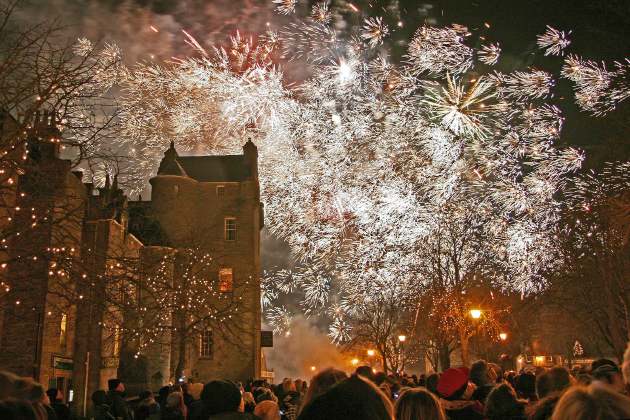It is believed that many of the traditional Hogmanay celebrations were originally brought to Scotland by the invading Vikings in the early 8th and 9th centuries. These Norsemen, or men from an even more northerly latitude than Scotland, paid particular attention to the arrival of the Winter Solstice or the shortest day, and fully intended to celebrate its passing with some serious partying.
There are several traditions and superstitions that should be taken care of before midnight on December 31st: cleaning the house and taking out the ashes from the fire; and clearing of all debts before "the bells" sound midnight, the underlying message being to clear out the remains of the old year and have a clean break and welcome in a young, New Year on a happy note.
Immediately after midnight it is traditional to sing Robert Burns’ Auld Lang Syne. An integral part of the Hogmanay party, which is continued with equal enthusiasm today, is to welcome friends and strangers with warm hospitality, whisky and, of course, lots of enforced kissing for all.
"First footing" (or the "first foot" in the house after midnight) is still common across Scotland. To ensure good luck for the house, the first foot should be a dark-haired male, and he should bring with him symbolic pieces of coal, shortbread, salt, black bun and a wee dram of whisky. The dark male bit is believed to be a throwback to the Viking days, when a big blond stranger arriving on your doorstep with an axe in hand meant big trouble, and probably not a very happy New Year!
As you celebrate the coming New Year, remember what a glorious celebration it is in Scotland!


 RSS Feed
RSS Feed
